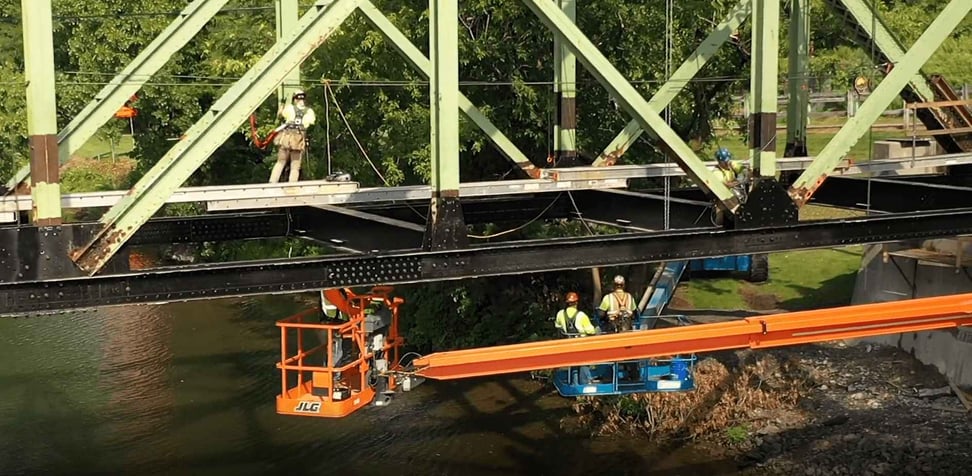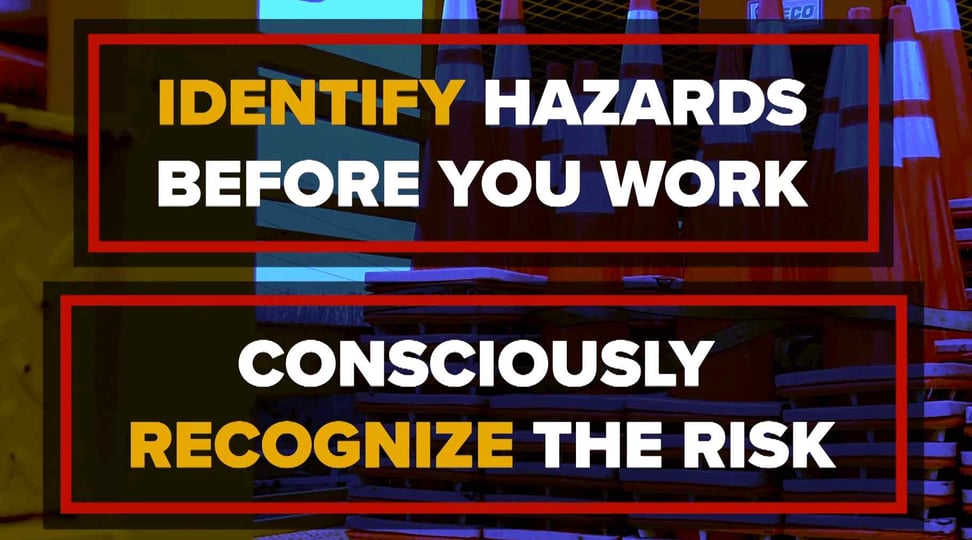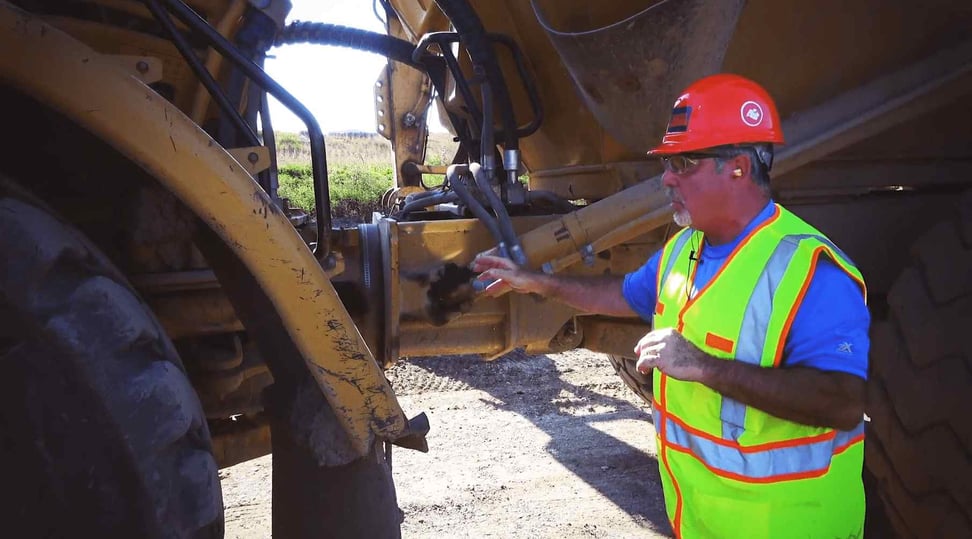
Did you know that construction workers are among the most at-risk for on-the-job injuries and fatalities? According to Occupational Safety and Health Administration (OSHA), 4,764 workers died on the job in 2020 alone. Workers in transportation, material moving occupations, and construction and extraction occupations accounted for nearly half of all fatal occupational and workplace injuries.
Construction work involves a lot of hazardous materials, equipment, and environments, as well as physical activities that may lead to accidents and injuries. Since most fatal injuries occur due to falls, being struck by an object, electrocutions, and being caught in/between accidents, workers must undergo proper construction safety training programs.
This blog post will outline the ten safety training programs for field workers and explain how they can help keep your team safe on the job.
1. Excavation and trenching safety.
Excavation and trenching can be dangerous work, with cave-ins being one of the leading causes of death in construction. The excavation and trenching safety training program teaches workers how to assess and address potential hazards properly and highlights different risks associated with working in excavation sites and confined spaces.
Unprotected trenches can collapse at any moment, so learning how to protect and support them is a vital aspect of this training program. It should also include proper ladder and ramp placement and how to properly use and maintain protective systems such as trench boxes or shields.
One of the most important things to remember is that all excavation and trenching work requires a competent person to be on-site at all times, someone who can identify and address potential hazards. Ensuring your workers have the proper training in this area can significantly reduce the risk of injury or death.

2. OSHA construction training
The Occupational Safety and Health Administration (OSHA) offers various construction safety training programs to help keep workers safe on the job. Their courses benefit both entry-level and experienced workers, as they cover a wide range of topics, including scaffolding safety, fall protection, excavation hazards, and electrical safety. Along with an introduction to OSHA, the training covers the topics such as material handling, ergonomics, confined space entry, and job site-specific policies.
The Occupational Safety and Health Administration construction training also helps familiarize workers with OSHA standards and regulations, introduces them to various inspection requirements, and ensures they comply with all laws and guidelines. In addition, completing OSHA construction training can help prevent costly fines and penalties for non-compliance.
3. Fall prevention and protection
Falls are one of the leading causes of death in the construction industry, which is why every construction business needs a comprehensive fall protection and prevention program. This training program should teach workers how to identify and assess potential fall hazards and the proper use and maintenance of fall protection equipment.
Well-structured fall protection and prevention training should also include information on guardrails, safety nets, personal fall arrest systems, and the importance of proper housekeeping on construction sites to minimize tripping hazards. Another important thing for workers to understand is how weather conditions can affect fall risks and how to plan accordingly for hazardous weather.
Fall prevention and protection training apply to all field workers, whether working on scaffolding or the ground. Implementing this program can significantly reduce the risk of injury or death from falls.
4. Hazard communication
Hazard communication training is important for all industries, not just construction. This program teaches workers how to identify and assess potential health hazards on the job and properly communicate those hazards to their coworkers.
Construction workers are often exposed to hazardous materials and chemicals on the job sites. That's why it is essential for hazard communication training to cover the use of Material Safety Data Sheets (MSDS) and labeling of hazardous materials, as well as proper storage and disposal practices. Repeated exposure to hazardous materials can have detrimental health effects, so workers must understand the safety procedures to properly handle and protect themselves from these substances.
A toxic tort is a lawsuit that involves someone being harmed by exposure to dangerous chemicals or substances. Employers can be held liable for not properly training their workers on how to handle and protect themselves from hazardous materials, making hazard communication training crucial in preventing toxic torts. To date, some of the most famous toxic tort cases concern asbestos, including the infamous Libby, Montana, asbestos outbreak.
To avoid liability and protect their workers from harm, it is crucial for construction businesses to have a thorough hazard communication training program in place. Hazard communication training also includes information on how to respond to incidents and emergencies involving hazardous materials, such as spills or leaks, and how to evacuate the worksite if necessary.

5. Power tools handling training
Construction workers often use power tools on the job, from drills and saws to jackhammers and nail guns. Workers need to understand not only how to operate these tools but also how to conduct routine maintenance and inspections.
Good power tool handling training should cover the safe use of power tools, including proper gripping techniques, keeping the tool stable, avoiding awkward positions and hand positions, and maintaining a secure footing. It should also teach workers about potential hazards associated with power tools, such as kickbacks or electrical shock, and how to prevent them, such as wearing protective equipment or avoiding unintentional contact with the tool's moving parts. Training on power tool maintenance is important to ensure the tool is functioning properly and reduce the risk of malfunction or injury.
Power tools can lead to severe injuries without a good construction safety training program. Inspecting the tools regularly, practicing safe operation, and storing them properly can significantly reduce the risk of accidents on construction sites.
6. Crane hazards management
Cranes are a vital piece of machinery on construction worksites that can also be very dangerous if not operated properly. Crane hazards management training teaches workers how to identify potential risks and assess the safety of crane operation, as well as proper communication techniques between the crane operator and workers on the ground.
A well-structured crane hazards management program should also cover the proper use and maintenance of signaling devices, pre-operation inspections, and how to safely load and unload materials. Because of their size and structure, cranes represent a unique hazard in the construction industry. Workers need to thoroughly understand how to safely use them to prevent accidents and injuries.
7. Welding safety training
Welding exposes field workers to many health and safety risks, such as burns, electric shock, eye damage, noise pollution, and inhalation of toxic fumes. Workers must have proper welding safety training, which covers protective equipment, safe handling and storage of welding materials, and proper ventilation and fume control on worksites.
This construction safety training program should also educate workers on the potential health effects of welding, such as respiratory problems and metal fume fever, and how to seek medical attention if necessary. Welding is a common task in construction, but without the proper safety precautions, it can quickly turn into a dangerous activity.
Another essential thing to cover in this construction safety training is the differences between welding, soldering, and brazing. Each of these methods is different but has numerous things in common. Welding creates the strongest joints that can bear the load, soldering creates the weakest joint of the three, while braizing falls somewhere in between. The workers need to understand the specific safety measures and precautions required for each welding process to prevent accidents and injuries while completing their job efficiently.
8. Harnessing training
Some workers may be required to work at great heights, such as repairing the roof of a building or installing windows. Knowing the right harnessing techniques is essential for their safety in these situations.
They need to understand how to properly use and inspect a safety harness, maintain their balance while working at heights, and safely ascend and descend from elevated areas. Harnessing training should ensure that those working at an elevated level know everything about the equipment, restraint systems, suspension systems, controlled descent systems, and fixed or portable ladders.
Workers going through the course should also be well-informed about the potential hazards of high falls, safety measures for preventing them, and how to maintain their equipment with proper cleaning and storage. Proper harnessing techniques can significantly reduce the risk of injury and should always be a key component in any construction safety training program.
9. Basic rigging
Rigging involves lifting, moving, placing, and securing heavy materials, equipment, and machinery on construction worksites. It also involves hoisting equipment such as cranes, winches, and lifting beams.
Basic rigging safety training teaches workers how to properly set up equipment, inspect it for any damage or defects, and communicate with the crane operator during lifts. This training should cover the safe load capacities of hoisting equipment, proper lifting techniques, and how to prevent accidents such as dropped loads or tipping.
The most common injuries related to rigging include strain, sprains, crushed limbs, and even death in the case of a dropped load. That's why field workers must know the importance of following weight limits, maintaining their balance during lifts, and securing loads properly to prevent injuries or damage to the worksite.
Piled materials that may get bumped or hit, bystanders in the lifting area, and unstable ground conditions are also important factors for workers to consider during rigging operations. Accidents can easily happen without proper rigging safety training, so workers must understand the necessary precautions and procedures.
10. Personal Protective Equipment (PPE) training
Personal protective equipment, or PPE, includes any clothing, gear, or device that protects workers from potential hazards on the job. This can range from hard hats and goggles to respirators and earplugs.
PPE safety training should cover what type of protective gear is necessary for specific tasks, how to properly wear and inspect it for any damage or defects, and how to clean and maintain it. Workers should also understand the limitations of PPE, such as the fact that it can only protect against certain hazards and not all of them.
Construction workers need to know when PPE is required and never to enter a hazardous area without the appropriate gear. Proper use of PPE can greatly reduce the risk of injury, illness, or death on the work site, making it a crucial component of any construction worker's safety training program.
What training do construction workers need?
The above programs are just a few that can help ensure workplace safety for workers on the job. Whether it's harnessing techniques, rigging safety, or using personal protective equipment, learning the necessary skills and procedures can reduce accidents and injuries in the construction industry.
However, it is important to highlight that in the construction industry, it is a requirement for all staff to take some form of basic workplace safety training, such as the OSHA 10 or 30-hour training program. Additionally, construction companies should offer ongoing and refresher safety training and training materials to keep workers up-to-date on any changes or updates in regulations and procedures and reinforce key safety practices.
While there is no set recommendation for the frequency of workplace safety training, as it will vary depending on the specific job tasks and hazards present at a construction site, employers should regularly assess potential risks and provide necessary training to address them.
When it comes to workplace safety training tracking, employers can use software programs or manual systems to keep records of the safety training their staff has completed, as well as any certifications or qualifications. This allows for easy access to information and helps ensure that all workers are properly trained for their job tasks.
Regulatory agencies, such as OSHA, may conduct inspections to verify compliance with safety training requirements. Failure to provide necessary safety training and keep accurate records can result in citations and penalties from regulatory agencies.
Overall, construction workers need to have a strong understanding of safety procedures and guidelines in order to protect themselves and those around them on the job. Adequate safety training can go a long way in preventing accidents and creating a safe work environment for all.

How to implement a training program for construction workers?
Construction companies can online implement safety training programs by identifying the necessary skills and procedures for their worksites, providing safety training courses or materials for employees to learn from, and regularly assessing and updating their training programs as needed.
Additionally, construction businesses can partner with companies specializing in field workers' training, safety, and compliance, such as CAHill TECH. Our comprehensive online platform, aQuiRe™, offers a variety of online safety training courses, including those listed above, as well as recordkeeping and reporting tools to help construction companies maintain compliance with safety regulations.
Using the aQuiRe platform, you can ensure all your site and in-office workers are getting theonline safety training they need to stay safe on the job. With our easy-to-use interface, you can easily assign workplace safety training to your employees, track their progress, and ensure they complete the courses.
The aQuiRe™ app has a growing library of over 300 training modules, quizzes and certifications, short videos from real job sites, machine inspection surveys, and equipment checklists. Our modules range from general safety awareness to specific training like fall protection, ladder safety, and working around power lines.
To learn more about aQuiRe™, its skill center, standards logging, and customized content, visit CAHill TECH or book a free demo here.



